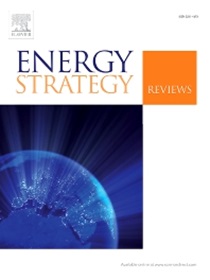无碳排放的经济增长:太阳能、风能、水电、核能和地热能的比较观点
IF 7.9
2区 工程技术
Q1 ENERGY & FUELS
引用次数: 0
摘要
随着全球对可持续能源需求的增加,实现无碳排放的经济增长既是一个严峻的挑战,也是一个机遇。这项研究调查了五种主要清洁能源——太阳能、风能、水电、核能和地热能——在促进经济增长同时减少碳排放方面的潜力。尽管人们对清洁能源的兴趣日益浓厚,但这些能源在不同经济和环境背景下的相对有效性仍未得到充分探讨,特别是它们与经济发展和排放的非线性关系。为了解决这一差距,本研究使用了涵盖2005年至2020年24个国家的稳健面板数据集,并采用固定效应和面板阈值模型来揭示清洁能源消费、GDP和二氧化碳排放之间的微妙关系。结果表明,清洁能源消费对所有五种能源类型的经济增长都有积极影响,其中太阳能和风能有助于稳定发展。然而,与二氧化碳排放的关系各不相同:太阳能、风能和地热显著减少了排放,而水力发电和核能由于基础设施的复杂性,排放较高。阈值回归分析进一步确定了地缘政治风险对非线性效应的调节作用。对于太阳能和风能,当风险水平超过阈值时,碳减排的影响变得更加明显,而水电和核能在高风险环境中显示出不断上升的排放。本研究强调,太阳能和风能是实现无碳经济增长的最有效解决方案,而水电和核能则需要改进治理和风险管理框架,以最大限度地减少其环境代价。本文章由计算机程序翻译,如有差异,请以英文原文为准。
Economic growth without carbon emission: Comparative perspectives on solar, wind, hydroelectric, nuclear, and geothermal energy
As the global demand for sustainable energy intensifies, achieving economic growth without carbon emissions has become both a critical challenge and an opportunity. This study investigates the potential of five major clean energy sources—solar, wind, hydroelectric, nuclear, and geothermal energy—in fostering economic growth while reducing carbon emissions. Despite the growing interest in clean energy, the comparative effectiveness of these energy sources in different economic and environmental contexts remains underexplored, particularly concerning their nonlinear relationships with economic development and emissions. To address this gap, this study uses a robust panel dataset covering 24 countries from 2005 to 2020, and employs fixed-effect and panel threshold models to uncover the nuanced relationships between clean energy consumption, GDP, and CO2 emissions. The results indicate a positive impact of clean energy consumption on economic growth across all five energy types, with solar and wind contributing to steady development. However, the relationship with CO2 emissions varies: solar, wind, and geothermal significantly reduce emissions, while hydroelectric and nuclear energy are associated with higher emissions due to infrastructure complexities. Threshold regression analysis further identifies nonlinear effects moderated by geopolitical risk. For solar and wind energy, the carbon-reducing impact becomes more pronounced when risk levels exceed the threshold, while hydroelectric and nuclear energy show escalating emissions in high-risk environments. This study highlights solar and wind energy as the most effective solutions for achieving carbon-free economic growth, while hydroelectric and nuclear energy require improved governance and risk management frameworks to minimize their environmental trade-offs.
求助全文
通过发布文献求助,成功后即可免费获取论文全文。
去求助
来源期刊

Energy Strategy Reviews
Energy-Energy (miscellaneous)
CiteScore
12.80
自引率
4.90%
发文量
167
审稿时长
40 weeks
期刊介绍:
Energy Strategy Reviews is a gold open access journal that provides authoritative content on strategic decision-making and vision-sharing related to society''s energy needs.
Energy Strategy Reviews publishes:
• Analyses
• Methodologies
• Case Studies
• Reviews
And by invitation:
• Report Reviews
• Viewpoints
 求助内容:
求助内容: 应助结果提醒方式:
应助结果提醒方式:


